|
Found after rains on well-rotted logs throughout the Midwest (and the rest of North America), Lycogala epidendrum is probably our continent's most frequently noticed slime mold. The fruiting bodies, called "aethalia," are round and pink at first, but they become gray to brownish with age. They look very much like "puffballs" (a kind of mushroom—see for example Lycoperdon pyriforme at our companion site, MushroomExpert.Com). But Lycogala epidendrum is not a mushroom; it just looks like one. Poke one of the fresh, pink lumps with a stick or knife, and you will quickly discover something very un-mushroom-like: it is filled with bright pink, sticky goo (presumably the "wolf's milk" in the slime mold's common name). However, as the slime mold grows older, the surface becomes purplish, then gray or brown—and the interior becomes firm and purplish brown. Eventually, the interior turns powdery and whitish. Fruiting bodies of Lycogala epidendrum are usually under about 2 cm in diameter (if yours is larger, see Lycogala flavofuscum, below), and the outer surface is often very finely cracked or scaly. We have seen Lycogala epidendrum throughout the Midwest, appearing from spring to late fall.
|
 midwestern range |
|
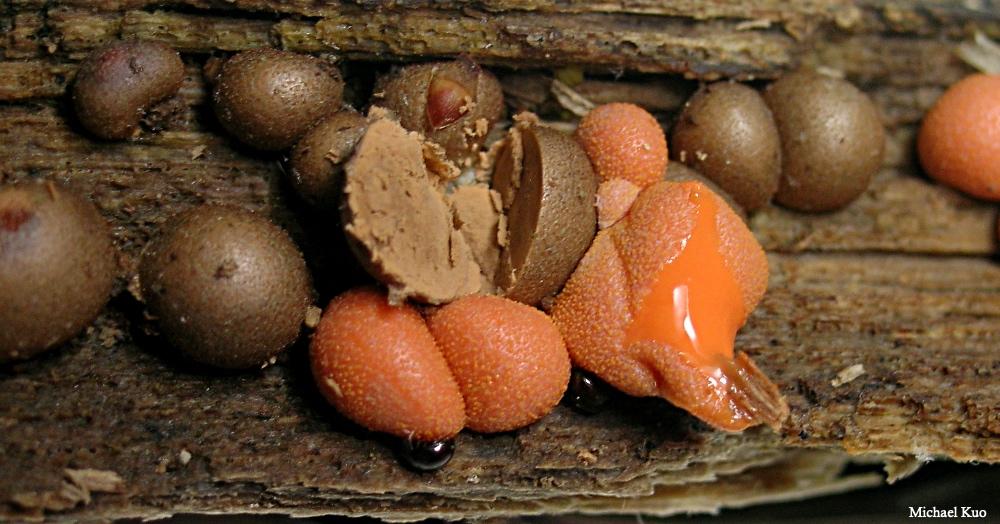
young, fresh aethalia with "wolf's milk," next to middle-aged aethalia with solid interiors
|
|

middle-aged specimens
|
|
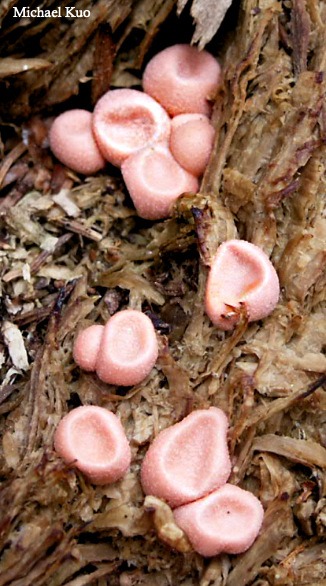
these aethalia began to dry out and shrivel before maturity
|
|
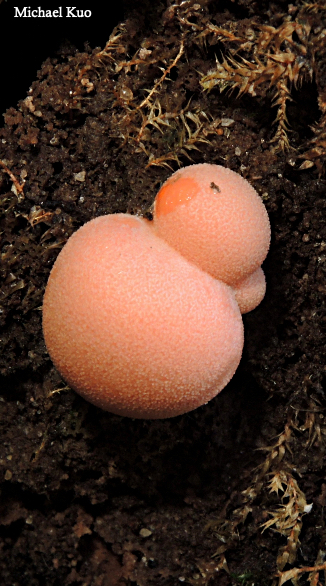
fresh, young aethalia
|
|
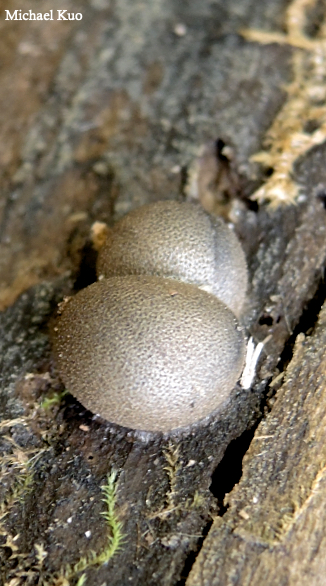
older aethalia
|
|
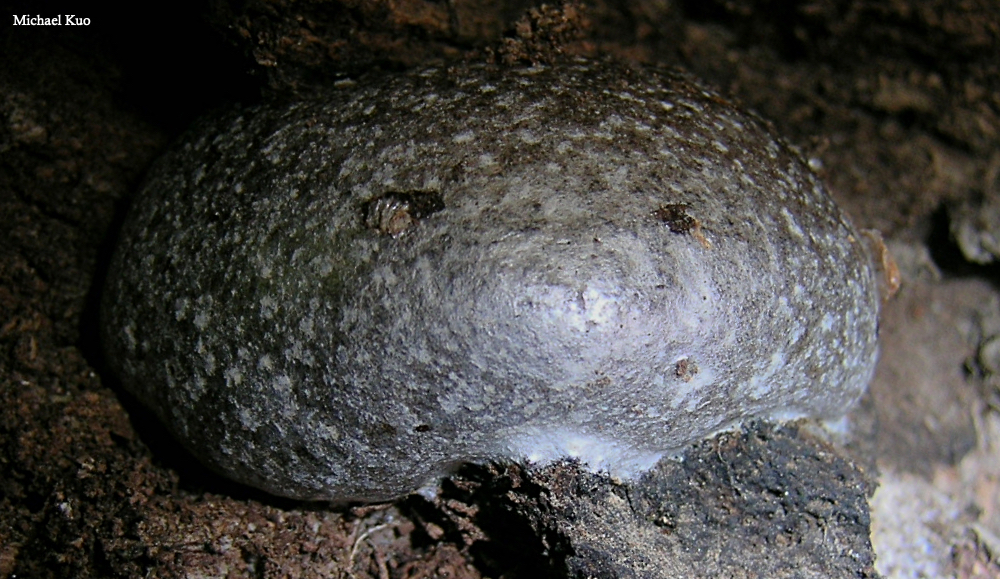
Lycogala flavofuscum, differing from Lycogala epidendrum in its larger size and slightly smoother surface
|
|



